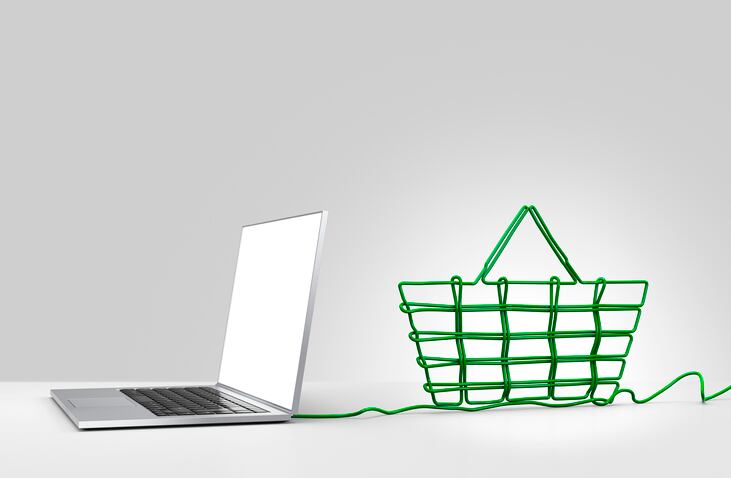Alcohol continues to lag behind other grocery categories, but the growth figures over the last two years show the industry is changing.
In 2019, US online alcohol sales totaled $2.6bn, representing just under 1.9% of total off-premise alcohol sales. In 2021, Rabobank estimates that figure has shot up to $6.1bn, representing 4% of total off-premise alcohol.
Wine takes the biggest chunk: accounting for $3.8bn. Spirits follow at $1.3bn and beer at $960m, according to Rabobank's 2022 Alcohol E-commerce Playbook.
Pandemic spurs (most) growth
Alcohol has been slow to catch on in US ecommerce. By 2019 retailers had started to realize the potential of the category: but it was really the pandemic that spurred the category into top gear.
In 2020, most major grocery chains reported overall e-commerce sales growth of around 100%. The alcohol category, however, grew 238% that year.
“Grocers oversaw a massive expansion in the number of retail locations that offer alcohol online. Prior to the pandemic, most grocery retailers willingly ignored the alcohol category. Focused on expanding the footprint of their most basic e-commerce offerings, they were not willing to risk delays in order to navigate the patchwork of complex and often ambiguous state alcohol regulations.”
A surge in consumer demand has also been accompanied by a friendlier regulatory environment - Georgia legalized alcohol delivery in 2020 while Ohio legalized spirits delivery in April 2021, for example - led to a ‘massive acceleration’ in the growth of grocery stores offering alcohol.
Penetration of beer and spirits has been boosted by the growth of online grocery and marketplaces channels: which have grown 271% over the two years.
Wine, however, tends to dominate direct-to-consumer (DTC) channels and licensed specialty retail, which are more fragmented and mature and tend to attract smaller super-premium brands. While these channels grew less rapidly, they still saw combined growth of 114%.
What to expect in 2022?
Online sales will be critical to beverage alcohol moving forward, says Rabobank. But how strongly the category fares in 2022 and beyond will depend largely on how much potential retailers see and how much effort they put into the category.
“Retailers must continue to raise awareness of their alcohol offerings through featured landing pages and cross-category promotions. They must optimize assortment, expand their offerings to include multiple modalities of fulfilment (curbside pickup, local delivery, and ship-to-home) and, perhaps most importantly, customize and improve the online shopping experience around alcohol)."
Brands, meanwhile, must continue to invest in their own e-commerce teams and capabilities.
While the industry has been moving in that direction (the size of e-commerce teams at beverage alcohol companies has grown 117% since 2019) some companies are still adjusting to the concept as a permanent rather than pandemic shift.
“For years, we have warned industry leaders that they are systematically underinvesting in their e-commerce teams, and we are glad they have finally started to rightsize their e-commerce investment. However, there is still a lot of work to do. E-commerce will be the number one driver of industry growth over the next decade and a critical component of brand-building, awareness and trial: both online and in-store. Even as the pandemic wanes, companies that fail to invest proactively in their e-commerce teams will struggle to remain relevant and retain market share”.

